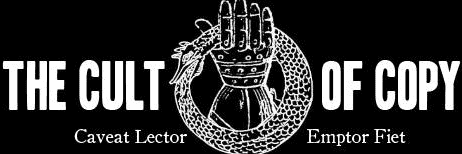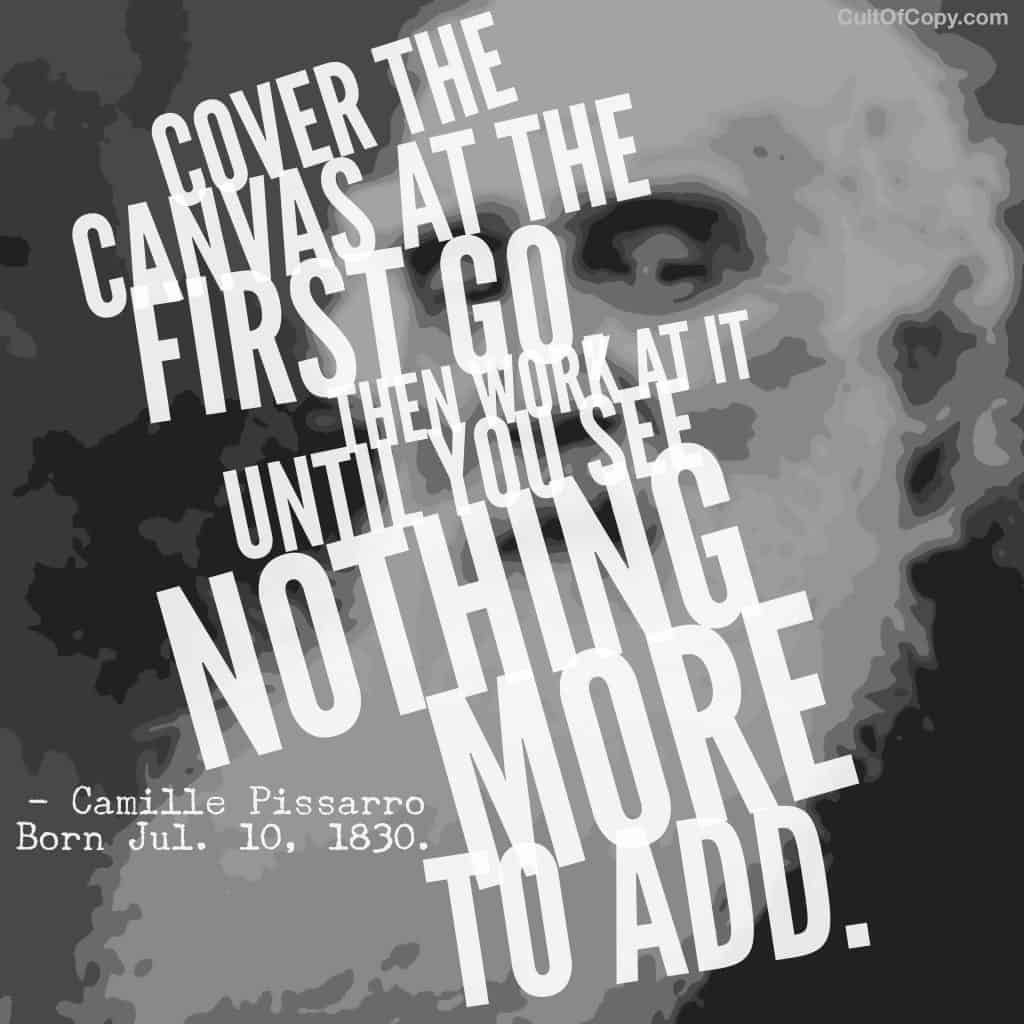“Cover the canvas at the first go, then work at it until you see nothing more to add.” – Camille Pissarro, Born Jul. 10, 1830.
This is also the way you should be doing client writing work.
One of the reasons I did my client work from templates is so that I knew I could complete a draft under deadline.
You fill in the skeleton, then add muscle, then add skin.
Then you can spend time trying to make it prettier, more fit, sexier, etc.
But if you begin by “covering the canvas” then you know at least you're completing the project and not getting stuck with some half formed monstrosity with missing limbs and organs. Like one of those weird tumors that have teeth and hair.
Fecking. Yuck.
Don't do that. Instead, cover the canvas then add more and more in every place you can within the overall completed structure.
I promise, it is a much easier way to work. You'll get less burnout. You'll get off of the creative burden hamster wheel. Plus, you'll find that you're actually better able to deliver CONSISTENT quality of output, and do it with more FREQUENCY.
I mean, consider a house builder. While every house is “different” they all follow a pattern. No one is reconsidering how a house should be from scratch. No one is toying with designs where the front door opens into the bedroom, with the kitchen accessible through the bathroom off the garage.
No – they start with a covered up canvas, and then they fill in the details within that completed “concept”.
Same with painting (the way Pissarro did it).
And yeah, same with commercial writing (the way I recommend it).
Cover it all first. Then polish as needed.


This is one of the most useful and enlightening things I have read about the process of writing copy. Thanks!
Colin, this is amazing. I'm learning things that are not available in youtube and a lot of websites.
Yes! Having a framework to draw from is infinitely easier than starting from scratch every time – and results in better work.
I really appreciate this one – I think this could be applied to most problem solving in general .
Colin, that's a great advice. It takes the stress off your head when you start with the foundation first, and then gradually add up the finer details. This is one reason why I like so much the lead types described in Michael Masterson & John Forde's "Great Leads: The Six Easiest Ways to Start Any Sales Message." It gives you a set of plans and you just need to select the one that fits most for your situation – and build up from there.
Great advice – it's obvious, but we still need to be reminded of it… Love the Pissarro quote 🙂
Great post. I work in eCommerce writing a lot of copy for Amazon listings. I can crank out several listings in a day if I follow my templated workflow, then clean them up tomorrow or the next day. Getting that first bit of basic info down, even if it is long and incredibly boring, let's me go back with a scalpel the following days and trim the fat away.
Amen and thanks, Colin.
What a great analogy.